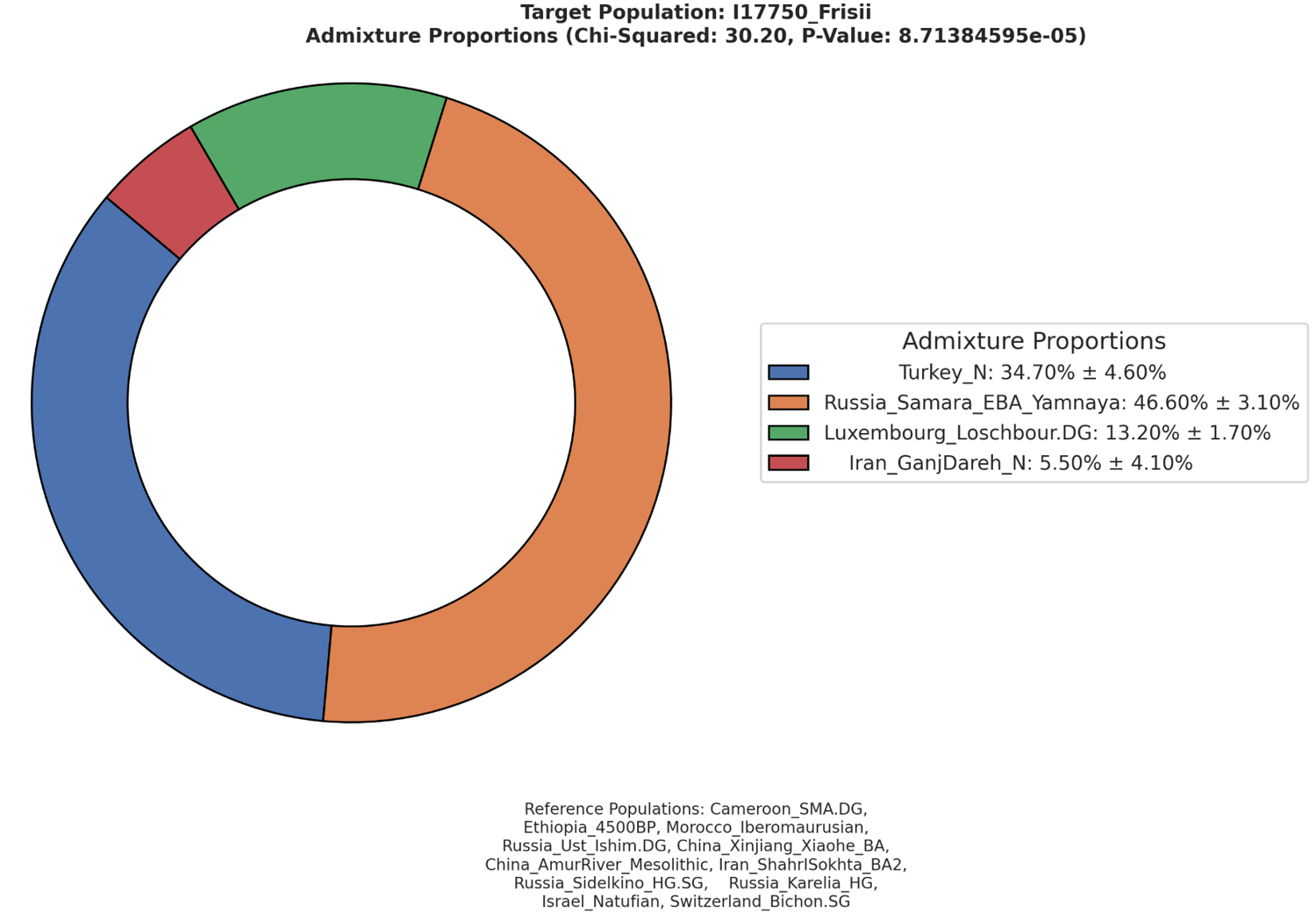
Frisian Netherlands 23andme DNA file Iron age
The Frisians are a Germanic ethnic group native to the coastal regions of the North Sea, particularly the areas now known as the Netherlands, Germany, and Denmark. Linguistically, they belong to the West Germanic branch of the Indo-European language family. Their language, Frisian, is closely related to Old English, reflecting historical connections between the Frisians and the Anglo-Saxons. Modern Frisian survives in three main dialects: West Frisian which is spoken in the Dutch province of Friesland, North Frisian, which is spoken in parts of Schleswig-Holstein, Germany, and Saterland frisian which is spoken in Lower Saxony, Germany.
Frisian traditional architecture reflects their adaptation to the low-lying, waterlogged landscapes of the North Sea coast. Terpen, which are artificial dwelling mounds, were a hallmark of Frisian settlement patterns, used to protect homes and farms from flooding before the construction of modern dikes. Frisian houses traditionally combined living quarters and barns under one roof, known as a "head-neck-body" farmhouse. The "head" housed the family, the "neck" served as a connecting corridor, and the "body" contained the barn and storage areas. Thatched roofs were common, and homes were often constructed using locally sourced materials like wood, clay, and reeds.
Frisian cuisine reflects the maritime and agricultural heritage of the region. Seafood, particularly herring, eel, and shrimp are featured prominently in traditional Frisian diets. Dairy products, especially butter and cheese, have long been staples, with the region known for producing high-quality butter. Traditional dishes include "sûkerbôle" and "nijbroek", a hearty stew made with pork, beans, and vegetables. Frisian beer and spirits, such as Beerenburg, an herbal liqueur, are also celebrated.
Frisian pottery showcases a mix of utilitarian and decorative styles. During the medieval period, Frisian pottery often consisted of simple, functional wares used for cooking and storage, made from clay readily available in the region. In the 17th century, Frisian towns like Harlingen became centers of ceramic production, producing distinctive earthenware that featured colorful glazes and intricate designs. These later ceramics often included tiles and decorative pieces that reflected both local tastes and broader Dutch influences. Frisian pottery remains a valued part of their cultural heritage, blending practicality with artistic expression.
For this video, I gathered the raw DNA of a late iron age frisian from the netherlands.
